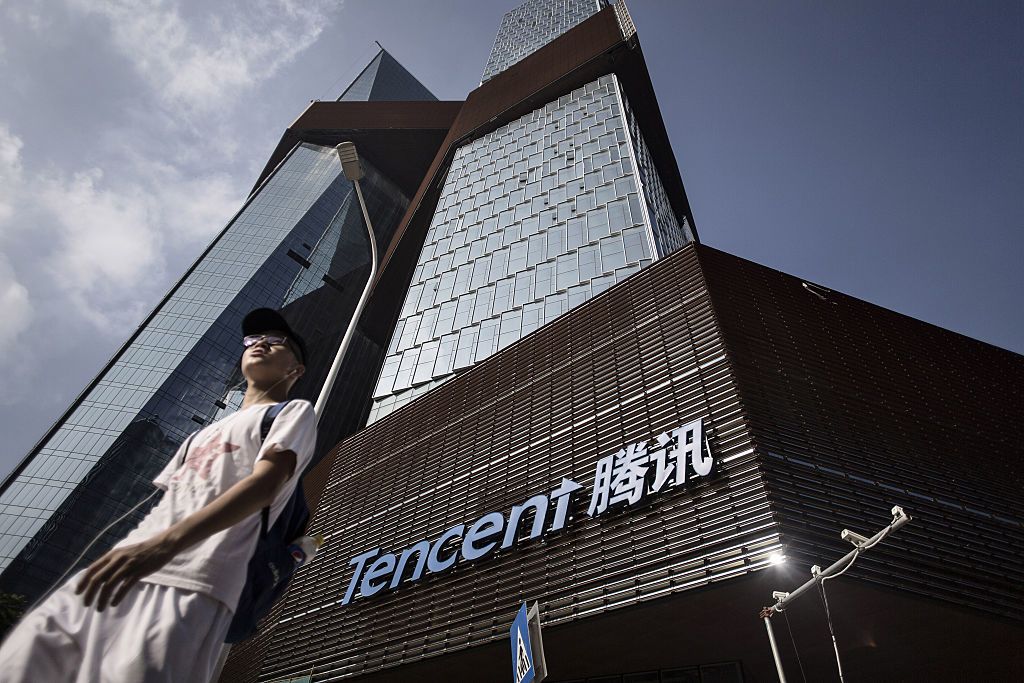SOCIAL MEDIA NEWS
Gaming, WeChat pay to drive profits
[ad_1]
Tencent’s headquarters in Shenzhen, China, pictured in August 2016.
Bloomberg | Getty Images
Tencent is reporting second-quarter earnings on Wednesday and the the market is expecting the company’s core gaming business and its financial technology division to mean strong revenue growth.
The Chinese giant is forecast to report the following results for the June quarter:
- 93.42 billion yuan ($11.9 billion) in revenue, according to estimates from Refinitiv. If realized, that would represent a nearly 27% year-on-year rise.
- Profit attributable to shareholders of 20.74 billion yuan ($2.64 billion), according to estimates from Refinitiv. That would be a roughly 16% rise if it were hit.
Tencent’s troubles
In the three months to the end of March, Tencent logged its slowest pace of quarterly sales growth since it went public in 2004.
That was because the Chinese government halted game approvals last year. Video games need to be approved by regulators in order to be released and monetized in China. That hurt Tencent’s business, which relies on a large portion — nearly 41% in the first quarter — of revenue from online gaming.
Billions of dollars were wiped off the stock in 2018. China began approving games again at the start of the year and a number of Tencent titles got the green light. The company’s stock has staged a small revival and is up over 6% so far this year.
Analysts, meanwhile, have maintained confidence in Tencent. The average 12-month price target on the stock is 428.46 Hong Kong dollars, according to Reuters data. That represents an over 28% upside from Tuesday’s close and a market capitalization of $521.7 billion. If Tencent’s valuation rises above $500 billion, it would be the first time since March 2018.
Gaming revival
After the game approval freeze was lifted, Tencent was able to release titles like “Peacekeeper Elite,” which is also known as “Game for Peace.” It’s a similar game to “PlayerUnknown’s Battlegrounds Mobile,” a game that Tencent co-developed but that never received approval for monetization. Tencent pulled that game from China, replaced it with “Game for Peace” and migrated users over.
The game grossed $14 million in its first three days of availability in China, according to data from Sensor Tower. There are other signs that Tencent’s gaming business is looking up: The Chinese giant was the top grossing mobile game publisher worldwide in July, Sensor Tower data showed.
Nomura said in a recent note that it expects online gaming revenue to grow 10% year-on-year driven mainly by a 30% rise in mobile gaming revenue, which accounts for 68% of the company’s total online gaming revenue.
New businesses
While gaming is still the biggest revenue driver for Tencent, it has looked to diversify to areas including financial technology and cloud computing.
In the March quarter, Tencent broke out numbers for its “fintech and business services” division for the first time. That included revenue it received from payments via WeChat Pay and other financial services products like micro-loans. It also included cloud computing revenue. That division accounted for over 25% of revenue in the first quarter, making it the second-largest business for Tencent.
The WeChat Pay platform, which is integrated into messaging app WeChat, is looking to become more profitable, according to analysts.
“We have learned from our industry contacts that Tencent’s WeChat Pay has enhanced efforts to improve profitability by phasing out/reducing subsidies,” Nomura said in a recent note.
Tencent pays subsidies to some merchants to use the WeChat Pay platform in order to boost its market share.
WeChat also has a social media function called Moments. Tencent has been slowly increasing the number of ads users see in that feed.
Tencent’s other business units include content and video streaming as well as advertising. That mix of revenue streams and the company’s push toward diversification is one reason analysts are bullish.
“Leveraging on its highly synergistic social ecosystem, Tencent’s diversified revenue streams from gaming to advertising and Fintech and business services demonstrates its strong execution capabilities,” Jefferies said in a note from earlier this month.
Headwinds
The major headwind for Tencent is the wider business environment, influenced by the U.S.-China trade war. Neil Campling, head of technology, media and telecommunications research at Mirabaud Securities called Tencent’s stock a “risk proxy” as the “largest and most liquid” emerging market stock. That has seen its shares caught up in some of the selling pressure that has weighed on Chinese stocks.
Another headwind is the slowdown in the Chinese advertising market. Digital ad spending in the world’s second-largest economy is expected to hit $79.82 billion in 2019, growing 22% from the year before, according to eMarketer. That’s a slowdown from the 28% growth seen last year.
That, coupled with stricter online content controls, could present a problem for Tencent.
“Aside from lingering macro impacts, we expect Tencent’s video ads service, which is a big component of media ads, also suffered from tightening content regulation, which has caused delays in the airing of some popular video content and consequently caused disruption to the video ads business,” Nomura said.
[ad_2]
Source link













